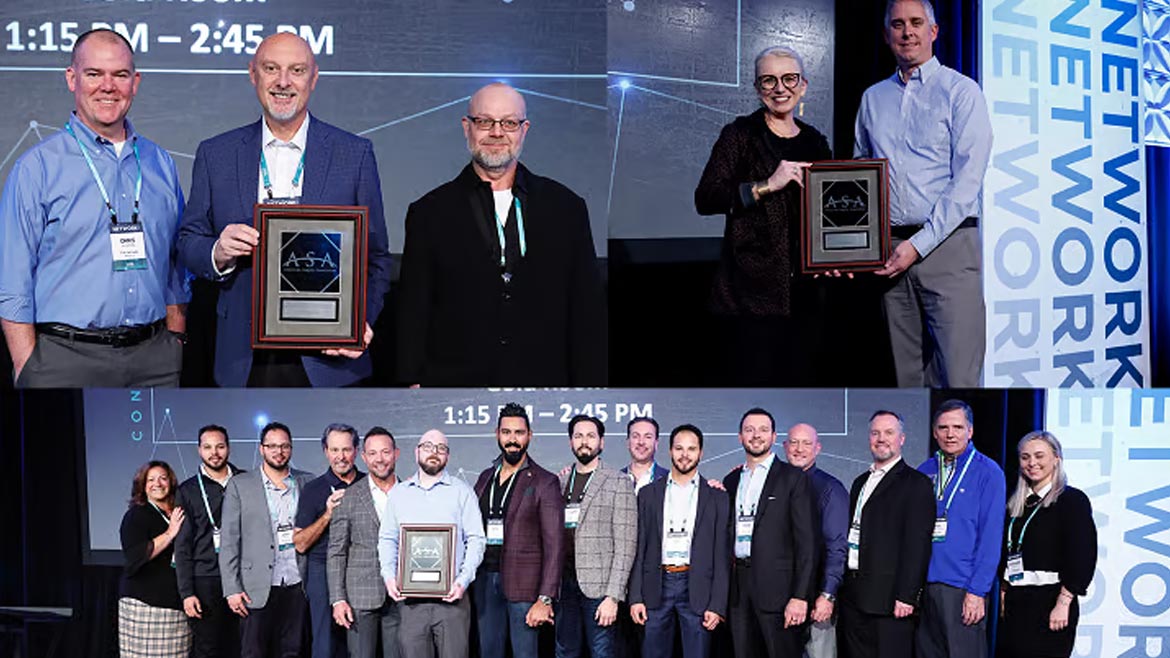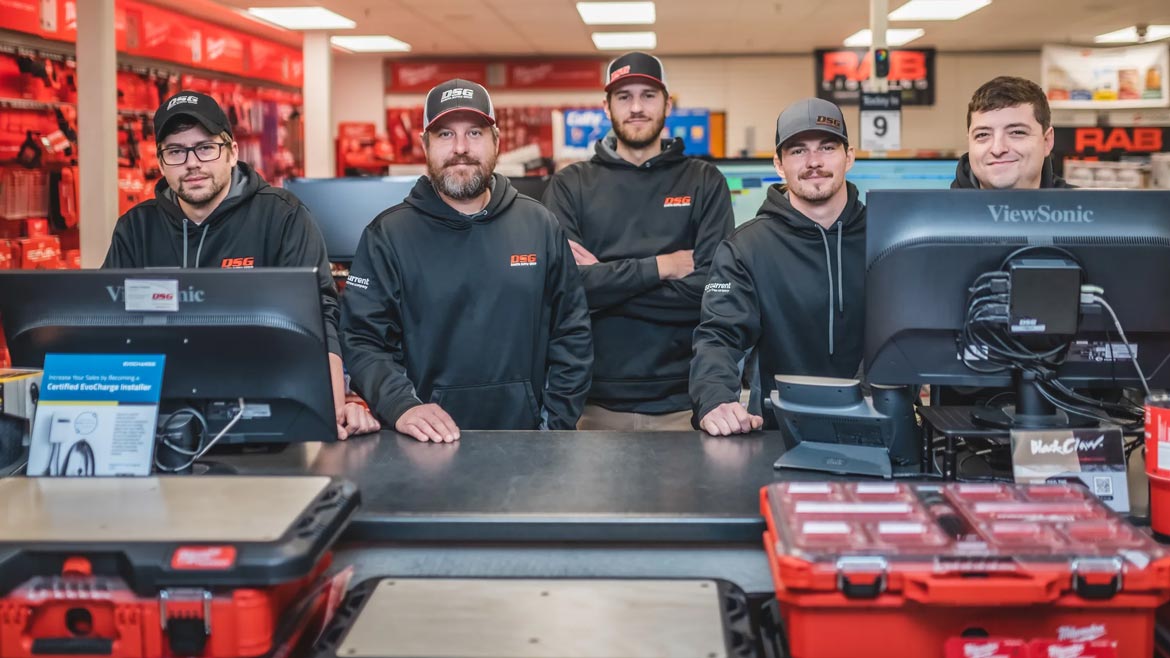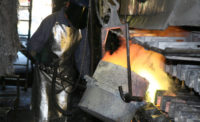When you think warehouse safety, you think of safe handling of forklifts, heavy materials, chemicals, fall prevention and so on. While these things are always a top priority, safety in the workplace has ventured down new avenues over the past several years. Safety managers are having to hold conversations on new safety topics such as vaccine mandates, personal protection equipment (PPE), active shooter preparedness, mental health, safe culture between employees and more. According to several 2022 American Supply Association (ASA) Safety Award Winners, the challenge today is building a culture of safety and communicating it throughout multiple branches in differing locations.
According to Michael Place, safety and compliance manager for Dakota Supply Group, the top three concerns among safety professionals today are:
How organizations communicate about safety;
What drives a healthy safety culture; and
What effective safety onboarding of new associates should look like.
Justin Sassen, safety manager for Porter Pipe and Supply agrees, noting it can be difficult to manage safety protocols among various branches. “One big topic that keeps coming up in the safety circle would be building a safety culture and positive encouragement/constructive criticism for use of PPE and working safely daily,” he says. “It can take a lot of uphill battles to get multiple team members across different facilities and states to follow safety policies, standard operating procedures and bad or out of date habits.”
POSITIVE COMMUNICATION
These safety pros say open communication and constant reinforcement are vital, and it’s important to involve the warehouse team in decisions.
“To get safety information across to team members we hold shift huddles, Warehouse Warrior meetings, provide Toolbox Talks, training modules, etc. The best way this information is delivered is by hands on, one-on-one training while walking the facility floor and just being present and available as much as possible,” Sassen explains. “Adding funny safety photos or TikTok’s to presentations and meetings has proven a good response as well. Thank you, William D’Amico, for that one!”
 Each year, ASA members may compete for the award by submitting an application and their prior year’s incident rate (300A form). Based on the outcomes of these incident rates, ASA recognizes the top performers in safety from among applicants. The 2023 winners were Tri*Star Pipe & Supply, Dakota Supply Group and Porter Pipe & Supply. Photo courtesy of ASA.
Each year, ASA members may compete for the award by submitting an application and their prior year’s incident rate (300A form). Based on the outcomes of these incident rates, ASA recognizes the top performers in safety from among applicants. The 2023 winners were Tri*Star Pipe & Supply, Dakota Supply Group and Porter Pipe & Supply. Photo courtesy of ASA.
Place says that building a healthy safety culture begins with a positive company culture. “DSG is fortunate to be employee owned. I believe this is one of the biggest drivers for success in our organization. It directly impacts morale, our willingness to praise others, and how associates interact,” he says. “We have a tremendous leadership team that is a vocal advocate for safety and encourages excellence in this area. We are fortunate to have healthy communication about safety at all levels of the business and we create value-added touchpoints that directly impact how associates perform their duties in our warehouses.”
Place adds that in order to manage safety company-wide, DSG has Safety Coordinators at every branch. “We have safety coordinators in every branch that work with their local teams to educate and onboard associates to safety. Branch and regional leadership support safety at the local level while ensuring adoption is consistent at all locations.”
Dave Poteete, president of Tri*Star Pipe and Supply says the key is to provide opportunities for feedback. “We have a weekly manager meeting at our main location and there are daily planning meetings with the warehouse where multiple topics are discussed,” he says, “But when discussing policies and changes, we include employees throughout the organization so they are part of the decisions and can give their opinions.”
Sassen agrees, noting you don’t want to shock employees with drastic changes. “Asking effected employees/departments their options, opinions, concerns, etc. before just changing something drastically without warning to not shock anyone. The communication before, during and after are critical to a successful implementation along with follow up.”
Slip ups will happen when it comes to safety policies. According to Sassen, a foundation of positive safety communication will help employees encourage each other to succeed. “The safety culture piece can be difficult at first. But once it’s there you can see and surely feel it around you and inside yourself. Seeing team members encourage or politely remind each other of safety standards is more than myself or Porter Pipe & Supply could ask for,” he says. “The team knowing, I have their backs and they have mine is the most rewarding accomplishment that cannot be purchased. It is the feeling most often noticed in our facilities.”
Our top priority at DSG is to ensure every employee owner returns home to their loved ones each day in the same or better condition than when they arrived to work. Everything we do for safety is focused on that goal.
Place agrees, noting that finger-pointing is never the way to go. “When there are misses on employee safety, PPE or otherwise, we coach our team members up on techniques to minimize the chance of reoccurrence,” he explains. “We give them the how and the why and we do it from the standpoint of their well-being. When conversations, even difficult ones, focus more on solutions than finger pointing, the results have usually exceeded expectation. How we engage is just as important as what we engage on.”
TRAINING IS MORE IMPORTANT THAN EVER
Safety pros cite staffing issues as a safety challenge today. Labor shortages and high demand can lead to associates being overworked, which can lead to accidents.
“Labor shortages have a direct impact on safety. If a location is not appropriately staffed, it means that existing employees have to do more with less. Incidents related to rushing, spacial awareness, not wearing PPE, and poor inspections can emerge when a workforce is overburdened,” Place explains.
Sassen agrees, noting preventing overworking is top of mind. “My biggest concern with the current state of things is the manpower and controlling the amount of time spend onsite. No one wants to become over worked and burnt out due to lack of employees. When you’re tired and the mind is not on task everyone is susceptible to injuries.”
Working through labor challenges means warehouses need to have more detailed and effective safety training than ever before.
“I believe education, job shadowing, on-the-job training and competency testing are the four pillars of effective safety onboarding,” Place says. “The better these activities are performed at our branch locations, the greater the likelihood that a safety mindset can take root in a new associate. Engagement is also key. New associates can see things from a unique perspective, so we try to foster a culture of openness to learn about their experiences and to inform improvements worth considering in the future.”
 Part of Dakota Supply Group safety team. Photo courtesy of DSG.
Part of Dakota Supply Group safety team. Photo courtesy of DSG.
Sassen agrees that hands-on training is the most effective avenue for safety topics, adding that taking the time — no matter how busy a team is — is important. “Taking the time, really working firsthand with each team members until they are fully confident in their abilities of what is being taught. From equipment training to proper PPE usage, the hands-on approach has proven extremely beneficial. Making a team member comfortable and knowledgeable in their role has yielded positive results.”
Sassen adds that Porter Pipe and Supply is after continuous improvement when it comes to safety. “Continuous improvement and industry evolution are necessary for growth. Being diligent on process and procedure along with policies are always the low hanging fruit for change,” he says. “Really taking something linear and asking, ‘where can this improve?’ will help dial in that question and show you where you want to be. When it comes to implementing new protocols, baby steps have shown us positive feedback.”
NEW TECHNOLOGY = NEW SAFETY PROTOCOL
Warehouses — and the PHCP-PVF industry altogether — are seeing automation and artificial intelligence gain traction. According to Place, automation often requires significant changes to safety protocols.
“Automation and improvements to handling equipment can call for significant protocol changes,” he says. “They can change the rules of engagement, what spaces workers can physically occupy, what lockout/tag out procedures are required and what type of training is needed. This is an ongoing challenge across our industry as we look at ways to perform warehousing operations more safely and efficiently.”
Sassen adds another new technology in the warehouse — overhead crane safety guide lights. “These will eliminate potential struck by hazards, indicate direction/destination and alert team members of moving material. We are currently in the process of training, SOP’s and team members will receive pre and post hands on training along with evaluations.”
Warehouses and workplaces nation-wide are looking at their existing emergency preparedness protocols.
“Last year, we made some significant improvements to our emergency preparedness planning by adding guidance related to active shooter events. We used that opportunity to streamline our communication protocols related to incident response and evacuation as well,” Place says. “Our associates are better positioned to execute a quality emergency response effort which is a big plus for safety. Other areas of focus have emerged because of the pandemic including illness symptom recognition, early reporting of illnesses and sanitization of common work surfaces.”
Workplaces are also recognizing the importance of creating a comfortable space for all employees. “I am currently working on creating a ‘safe space,’’ Sassen says. “My goal is to have an outlet for team members to report unsafe conditions, hazards, employee activities, etc. in an anonymous form (email, text, written letter). This is a place to vent frustrations, concerns or inform me of what is and isn’t working and so one. I’m here to help listen and resolve anything and everything I can or get the resources to do so.”
NEVER ENDING COMMITMENT
What earned these companies the 2022 ASA Safety Award is their consistent commitment to creating the safety workplace possible, never resting on their laurels.
Place says the drivers in this commitment at DSG are genuine appreciation for team members and the belief that safety is a key component of organizational excellence.
“I am the advocate for every silent stakeholder at DSG. I speak on behalf of every parent, spouse, child, and friend of the people who work here,” he says. “They all expect their loved ones to come home each day healthy, both mentally and physically. It is my responsibility to fulfill their expectation and to treat safety just as they would want me to treat it. I’m their champion and I do my best to be their voice when it matters most.”
Sassen agrees, noting that Porter Pipe and Supply’s safety culture is built upon integrity, honesty and trust. “I’m passionate about safety. Being the one that facilitates team members coming into work whole and returning home the same way daily is fulfilling,” he says. “I think of everyone at Porter Pipe as a part of my family, so I want to keep them protected.”
Poteete sums up his view on workplace safety nicely, saying, “We are continuously focused on doing things right while creating a work space and environment that promotes good practices and protects our most valued assets, the employees.”





